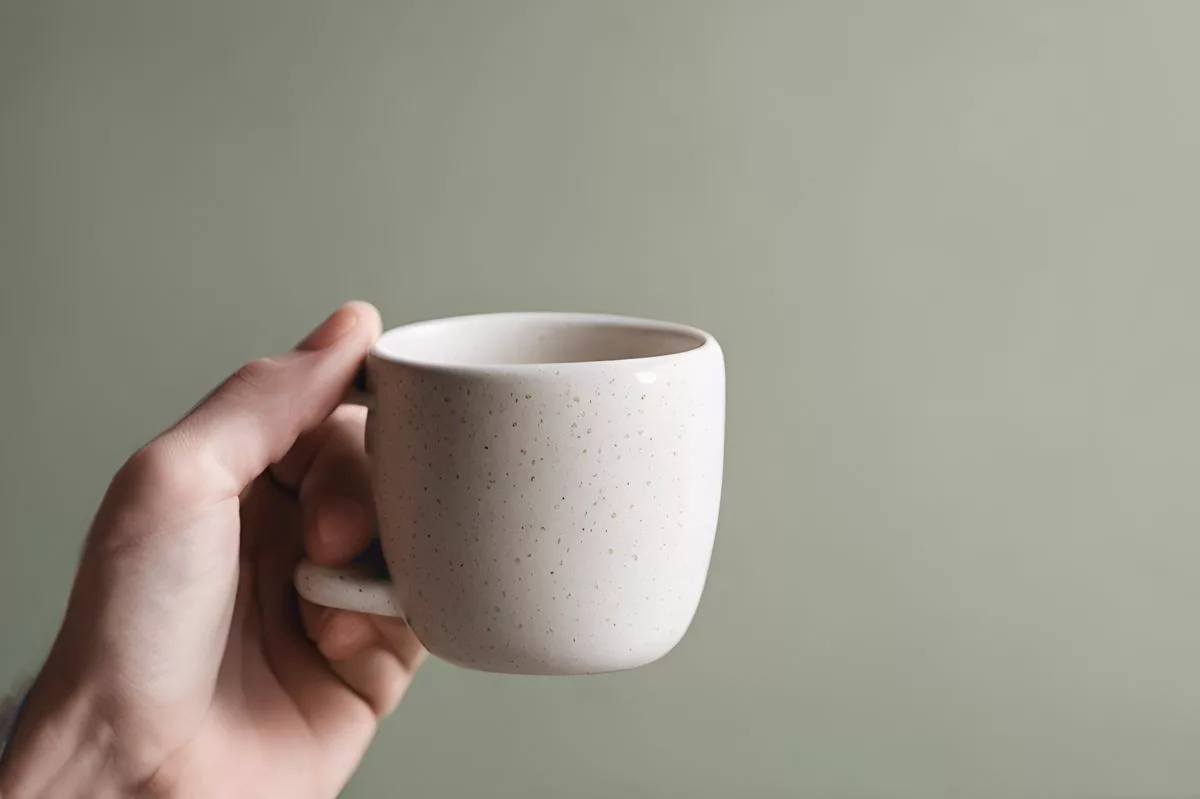Janice Rabie’s ceramics are more than just mugs and cups – they are works of art that beautify any home. Her signature mug is a cult classic, with fans around the world going to great lengths to secure the latest designs. Using the slip-casting method, Rabie’s ceramic collection includes jugs, vases, tea cups, and espresso cups, each item as exquisite as the next. Her ceramics are moments of serenity, works of art, and symbols of personal ritual.
What makes Janice Rabie’s ceramics so special?
Janice Rabie’s ceramics are more than just mugs and cups – they are works of art that beautify any home. With delicate and slender shapes for refined sipping, her hand-painted patterns on white clay offer a visual feast. Using the slip-casting method, her ceramic collection includes jugs, vases, tea cups, and espresso cups, each item as exquisite as the next. Rabie’s ceramics are moments of serenity, works of art, and symbols of personal ritual.
The Magic Behind the Mug
Often, the claim of ‘best mug in the world’ may sound like an exaggerated statement. But when it comes to the ceramics by Janice Rabie, many connoisseurs around the globe would happily agree. This artist from Capetown has gained not only local fame but has also earned a dedicated international fanbase. Her mugs are in high demand in various cities around the world, including London and Berlin. Rabie’s ardent admirers go to great lengths to secure her newest creations, even enlisting the help of their South African acquaintances to deliver these coveted ceramics during their overseas trips.
An Artistic Essential
One might wonder how an everyday item such as a mug can attain the status of a ‘cult classic’. It all starts with the visual appeal. Rabie’s ceramics, displayed with taste on a perfectly arranged shelf, are a sight to behold. They transcend their utilitarian purpose to become works of art that beautify any home. Moreover, these mugs have become an integral part of the cherished rituals of tea or coffee drinking, providing moments of tranquility amidst the daily grind.
The magnetism of these mugs, however, is not just about aesthetics and tradition. The famous architect Frank Lloyd Wright once said, ‘Form and function should be one, joined in a spiritual union.’ Rabie’s signature mug embodies this harmonious blend of form and function. Its design boasts a delicate, slender shape for refined sipping, while the hand-painted patterns on white clay offer a visual feast. Once you’ve had a taste of Rabie’s ceramics, it’s hard not to get hooked, sparking an endless longing for more.
Beyond the Mug: A Diverse Ceramic Collection
Rabie’s artistic range is not limited to mugs. She also designs jugs, vases, tea cups, and espresso cups, each item as exquisite as the next. Rabie works from her home studio in suburban Wynberg, nestled among towering trees, where she brings her creations to life with quiet elegance. Her serene spirit pervades the space, casting a soothing aura.
The process of creating Rabie’s ceramics is a fascinating journey of craftsmanship. She employs a method called slip-casting, where a blend of clay and water is poured into a mold. The mixture solidifies upon drying, creating a smooth surface perfect for decoration and facilitating the reproduction of designs, a crucial aspect for a commercial enterprise.
A Journey of Resilience and Creativity
Rabie embarked on her ceramic journey in the 80s, but it was in 2001 when she honed her signature mug design that her business truly blossomed. The switch to white clay resulted in thinner mugs with more vibrant paint patterns, heralding the birth of her now legendary design. A breakthrough came in 2003 when her ceramics found a home at the delicatessen and home décor store, Melissa’s. The immediate success of her products bore witness to their irresistible appeal.
Rabie’s business faced a challenge when Melissa’s went bankrupt in 2018. However, backed by a devoted clientele, she rebounded. Now, she supplies various local stores, sells at markets, and maintains a robust online presence. She derives immense inspiration from hand-painting her ceramics. Her designs have evolved over the years, guided by the preferences of her customers.
Rabie’s ceramics, her primary source of income, also fund her passion for painting. Her current study of man-made structures juxtaposed with nature showcases her artistic genius. Although she is content with her ceramics business, Rabie prefers not to expand, choosing to work at her own pace and in her own space.
A Must-Have Collection
If you’re keen on starting your personal Janice Rabie collection, her work can be found at the Ceramics SA’s Potters Market, The Constantia Gift Fair, and in stores such as Africa Nova, The Blue Cafe, Mantra Café, Delia’s Plett, Pure South, Ebony, and Cape Times. Online purchases can be made on her website, janicerabieceramics.co.za.
Janice Rabie’s ceramics, a fusion of art and utility, have carved out a unique space for themselves. They are not just objects; they are moments of serenity, works of art, and symbols of personal ritual. In our fast-paced world, Rabie’s ceramics invite us to slow down, appreciate the beauty in everyday life, and relish the simple pleasure of sipping from a beautifully crafted mug.
1. What is Janice Rabie’s ceramics known for?
Janice Rabie’s ceramics are known for being more than just mugs and cups, they are works of art that beautify any home. Her signature mug is a cult classic, with fans around the world going to great lengths to secure the latest designs.
2. Why are Janice Rabie’s mugs so popular?
Janice Rabie’s mugs are popular due to their visual appeal and the aesthetic experience they provide. They have become an integral part of the cherished rituals of tea or coffee drinking, providing moments of tranquility amidst the daily grind.
3. What is the process of creating Janice Rabie’s ceramics?
Janice Rabie employs a method called slip-casting, where a blend of clay and water is poured into a mold. The mixture solidifies upon drying, creating a smooth surface perfect for decoration and facilitating the reproduction of designs, a crucial aspect for a commercial enterprise.
4. How did Janice Rabie’s ceramics business start?
Janice Rabie embarked on her ceramic journey in the 80s, but it was in 2001 when she honed her signature mug design that her business truly blossomed. The switch to white clay resulted in thinner mugs with more vibrant paint patterns, heralding the birth of her now legendary design.
5. Where can you find Janice Rabie’s ceramics?
Janice Rabie’s ceramics can be found at the Ceramics SA’s Potters Market, The Constantia Gift Fair, and in stores such as Africa Nova, The Blue Cafe, Mantra Café, Delia’s Plett, Pure South, Ebony, and Cape Times. Online purchases can be made on her website, janicerabieceramics.co.za.
6. Does Janice Rabie’s ceramics business have any challenges?
Janice Rabie’s business faced a challenge when Melissa’s, the delicatessen and home décor store that carried her ceramics, went bankrupt in 2018. However, backed by a devoted clientele, she rebounded and now supplies various local stores, sells at markets, and maintains a robust online presence.










